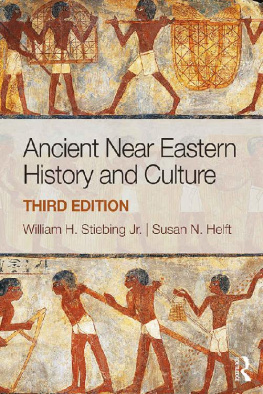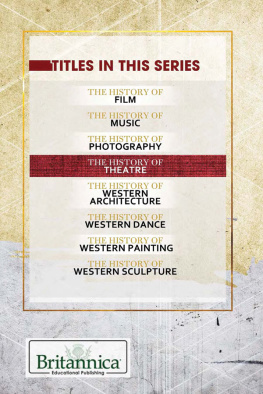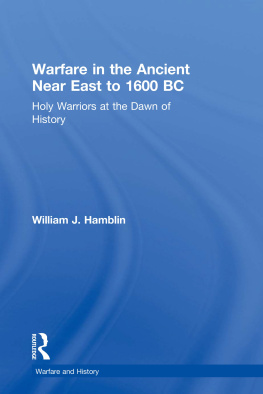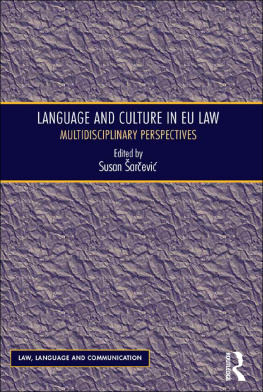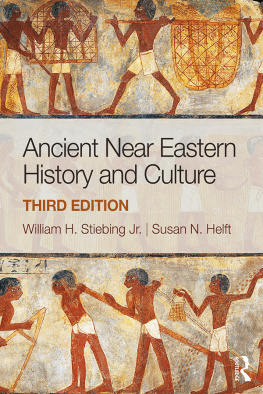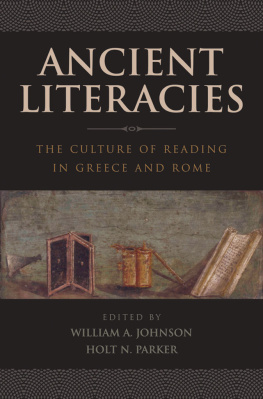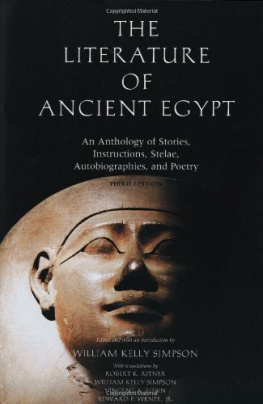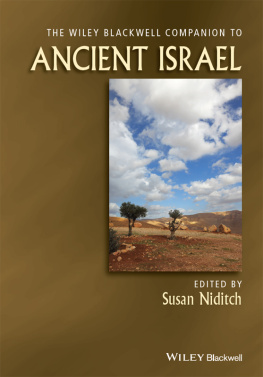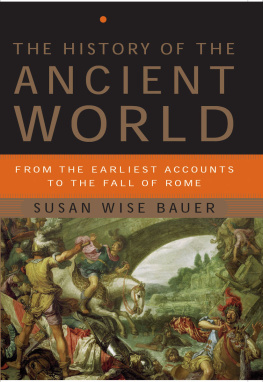William H. Stiebing Jr. and Susan N. Helft - Ancient Near Eastern History and Culture
Here you can read online William H. Stiebing Jr. and Susan N. Helft - Ancient Near Eastern History and Culture full text of the book (entire story) in english for free. Download pdf and epub, get meaning, cover and reviews about this ebook. year: 2018, genre: Romance novel. Description of the work, (preface) as well as reviews are available. Best literature library LitArk.com created for fans of good reading and offers a wide selection of genres:
Romance novel
Science fiction
Adventure
Detective
Science
History
Home and family
Prose
Art
Politics
Computer
Non-fiction
Religion
Business
Children
Humor
Choose a favorite category and find really read worthwhile books. Enjoy immersion in the world of imagination, feel the emotions of the characters or learn something new for yourself, make an fascinating discovery.
- Book:Ancient Near Eastern History and Culture
- Author:
- Genre:
- Year:2018
- Rating:4 / 5
- Favourites:Add to favourites
- Your mark:
- 80
- 1
- 2
- 3
- 4
- 5
Ancient Near Eastern History and Culture: summary, description and annotation
We offer to read an annotation, description, summary or preface (depends on what the author of the book "Ancient Near Eastern History and Culture" wrote himself). If you haven't found the necessary information about the book — write in the comments, we will try to find it.
Ancient Near Eastern History and Culture — read online for free the complete book (whole text) full work
Below is the text of the book, divided by pages. System saving the place of the last page read, allows you to conveniently read the book "Ancient Near Eastern History and Culture" online for free, without having to search again every time where you left off. Put a bookmark, and you can go to the page where you finished reading at any time.
Font size:
Interval:
Bookmark:
Organized by the periods, kingdoms, and empires generally used in ancient Near Eastern political history, Ancient Near Eastern History and Culture interlaces social and cultural history with a political narrative. Charts, figures, maps, and historical documents introduce the reader to the material world of the ancient Near East, including Egypt. The emphasis on historical debates and areas of uncertainty helps students understand how historians use evidence to create interpretations and that several different interpretations of history are possible.
New features in this edition include:
- Reorganization of the chapters on the early periods, with discussions incorporating the latest archaeological finds.
- New Debating the Evidence sections discussing current controversial issues in Near Eastern history. These sections make it easy for students and teachers to find and use the portions of the text devoted to scholarly arguments about various aspects of ancient Near Eastern history.
- A new chapter, Ancient Israel and Judah, has been added to cover more completely the crucial issues of ancient Israelite history and religion.
- More emphasis has been placed on the role and contributions of women in the ancient Near East.
The most important change is the addition of co-author Susan N. Helft, a specialist in the art and archaeology of the ancient Near East, who has applied her considerable knowledge, insight, research, and editing skills throughout the book. This new edition of Ancient Near Eastern History and Culture will remain a crucial text for students beginning to learn about the fascinating civilizations of the Near East.
William H. Stiebing Jr. is Seraphia Leyda Professor of History, Emeritus, at the University of New Orleans, USA.
Susan N. Helft is an adjunct lecturer at Rutgers University Newark and Bryn Mawr College, USA.
Third Edition
William H. Stiebing Jr. and Susan N. Helft

Third edition published 2018
by Routledge
711 Third Avenue, New York, NY 10017
and by Routledge
2 Park Square, Milton Park, Abingdon, Oxon, OX14 4RN
Routledge is an imprint of the Taylor & Francis Group, an informa business
2018 Taylor & Francis
The right of William H. Stiebing Jr. and Susan N. Helft to be identified as authors of this work has been asserted by them in accordance with sections 77 and 78 of the Copyright, Designs and Patents Act 1988.
All rights reserved. No part of this book may be reprinted or reproduced or utilised in any form or by any electronic, mechanical, or other means, now known or hereafter invented, including photocopying and recording, or in any information storage or retrieval system, without permission in writing from the publishers.
Trademark notice: Product or corporate names may be trademarks or registered trademarks, and are used only for identification and explanation without intent to infringe.
First edition published by Pearson 2002
Second edition published by Pearson 2009
Library of Congress Cataloging-in-Publication Data
Names: Stiebing, William H. Jr., author. | Helft, Susan N.
Title: Ancient near eastern history and culture/William H. Stiebing, Jr. and
Susan N. Helft.
Description: Third edition. | New York, NY : Routledge, 2017.
Identifiers: LCCN 2016039416 | ISBN 978-1-138-08240-3 (hbk. : alk. paper) |
ISBN 978-1-138-68641-0 (pbk. : alk. paper) | ISBN 978-1-315-54233-1 (ebook)
Subjects: LCSH: Middle EastHistoryTo 622.
Classification: LCC DS62.2 .S65 2017 | DDC 939.4dc23
LC record available at https://lccn.loc.gov/2016039416
ISBN: 978-1-138-08240-3 (hbk)
ISBN: 978-1-138-68641-0 (pbk)
ISBN: 978-1-315-54233-1 (ebk)
Typeset in Times New Roman by Apex CoVantage, LLC
To Ann, My Wife, Best Friend and Fount of Inspiration; and to the Memory of Our Daughter, Kimberly (Kira) Heston.WHS
To Josh and My Children, with Love and Appreciation.SNH
The Near East is the area where the earliest civilizations yet known originated. But what area is subsumed under the designation the Near East? What sources of information do historians have for reconstructing its early history and chronology? We must cover such preliminary matters before describing what is known and unknown about the ancient Near Eastern civilizations.
It has long been customary in the West to date events BC (Before Christ) or AD ( Anno Domini , in the Year of Our Lord) in relation to the supposed date for the birth of Jesus of Nazareth, or Jesus Christ as Christians call him. In recent decades many have used an alternate, more inclusive terminology: BCE (Before the Common Era) and CE (the Common Era) that represent the same time periods as BC and AD , respectively. We will use the BCE and CE designations for dates in this text. When considering events before the traditional date for the birth of Jesus, the student must get used to counting backwards to date events. For instance, 1800 BCE is two hundred years earlier than 1600 BCE .
This book is an introduction to the ancient history and culture (c. 3500330 BCE ) of an area that scholars of antiquity call the Near East. This large territory includes Asia Minor (Turkey), the Levant (Syria west of the Euphrates, Lebanon, Israel, and Jordan),). It naturally has much diversity in terrain, climate, and culture.
This large region has at times been called by several other names: the ancient Orient, the Middle East, or western Asia and Egypt. From the fifteenth through eighteenth centuries CE , when European nations were just discovering the lands and cultures of China, Japan, India, and Southeast Asia, the term Orient or East generally referred to the region we are calling the Near East. Even during the nineteenth and early twentieth centuries CE , the Orient in the name of the famous Orient Express train referred to Turkey, because Istanbul was its final destination. The Christmas carol We Three Kings of Orient Are alluded to magi

The Near EastModern State Borders
traveling from Persia or Mesopotamia, not from China or Japan. As the more distant Asian lands became better known, they became the Far East, and the old Orient or East became the Near East.
The Middle East is a term developed in the twentieth century CE to designate most of the area that formerly had been the Ottoman Turkish Empire. It usually includes the countries of Asia west of Afghanistan and Pakistan. Thus, it corresponds generally with the area covered in this book. However, the term is also often applied to those lands that are primarily Islamic in culture. When used in this way, it includes Afghanistan, Pakistan, and Egypt. Sometimes, the term even includes the Muslim nations of North Africa (Libya, Tunisia, Algeria, and Morocco). This dual meaning might make it useful for modern political analysis, but Middle East is too ambiguous a designation for use by historians. So, although news reporters, politicians, and political scientists have adopted the use of Middle East, scholars studying ancient civilizations generally have not.
In recent decades, American schools have been providing better coverage of African states and civilizations. As part of that emphasis, educators have stressed Egypts position in Africa and its role as an African culture. Also, ancient Egypt was more self-contained and its culture somewhat more parochial than those of the other Near Eastern nations. Thus, some scholars have preferred to speak of western Asia and Egypt rather than the Near East. Geographically, that terminology is correct. However, in antiquity, Egypt was related economically, diplomatically, and to a degree culturally to the societies of western Asia. While it also had similar connections with Nubia to the south and lesser ones with Libya to the west, it had few affiliations with the rest of Africa. Most students of ancient cultures have continued to consider ancient Egypt an integral part of the Near East. Furthermore, the designation Near East is shorter and less cumbersome than western Asia and Egypt. Therefore, the Near East has remained a viable scholarly designation for the region even though it includes parts of two continents and its outer boundaries are somewhat fluid.
Font size:
Interval:
Bookmark:
Similar books «Ancient Near Eastern History and Culture»
Look at similar books to Ancient Near Eastern History and Culture. We have selected literature similar in name and meaning in the hope of providing readers with more options to find new, interesting, not yet read works.
Discussion, reviews of the book Ancient Near Eastern History and Culture and just readers' own opinions. Leave your comments, write what you think about the work, its meaning or the main characters. Specify what exactly you liked and what you didn't like, and why you think so.

